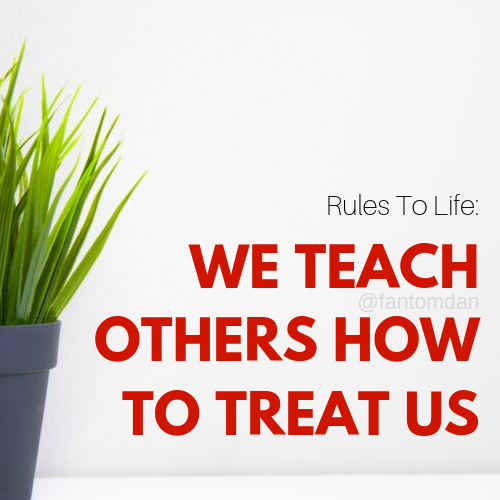There’s a general misconception that bullying takes place on school grounds or is something only children and teenagers experience. This is simply not true as bullying can happen at any stage of your life in a number of environments, especially your place of work. What’s more, is you’ve probably witnessed or been a victim of bullies in the workplace without even knowing it.
I have experienced intimidation in the workplace myself but only recently realised that it was actually a form of bullying. Now that I’ve identified it, I will never be a victim again because I know that behaviour is unacceptable. And so I felt compelled to research the subject to educate others about how to identify it and how to deal with these situations.
How to Identify Bullying
The nature of a business environment is generally stressful and so it can sometimes be difficult to identify bullying. There is bound to be disagreement, criticism, and staff with more authority calling employees out on poor performance for example. This is all acceptable on the condition that it is legal and does not violate another individual’s fundamental human rights. Verbal abuse, sabotage, humiliating, or intimating another employee in any way is seen as bullying.
Types of Bullying
There are 4 main types of bullying, i.e. physical, verbal, relational and cyberbullying. While some of these are less prevalent in a professional environment, there are cases of all types happening every single day.
- Physical Bullying: This is the most well-known form of bullying and unlike the other types of bullying, it is the easiest to identify and therefore tends to be less prevalent in the workplace. It is often thought of as physically harming someone else, which is certainly a form of physical bullying, but it can also be physically intimidating someone. It does not have to be violent.
- Verbal Bullying: Relentless insults to hurt, belittle or demean another person and their attributes in a threatening or disrespectful manner is known as verbal bullying. This is one of the most common forms of bullying in a work environment and is typically between an employee and someone in a more senior position, but can happen between colleagues as well.
- Relational Bullying: This form of bullying is more difficult to identify but is probably the most prevalent in the workplace. Relational bullying, or emotional bullying as it is also known, is social manipulation to emotionally hurt someone or their social standing. This is often for the purpose of the bully getting ahead by controlling or demeaning others.
- Cyberbullying: Cyberbullying is any form of online communication that is of a threatening or intimidating nature. This includes social media, emails or text messages sent to or about another person.
How to Deal With A Workplace Bully

Bullying is not always intentional so being tactful in your approach is crucial. Stand up for yourself but do not retaliate. Not only is it unprofessional, but fighting fire with fire will have a negative impact on your character, which is likely to result in the matter not being taken seriously. You also run the risk of being seen as the perpetrator or a part of the problem. Instead, when the incident occurs, if in an appropriate setting, firmly tell the person that their behaviour is unacceptable. If it is not the right setting, keep your composure and take them aside afterward to express your point of view in a calm and respectful way. Once you’ve indicated where the line is they’ll hopefully get the idea and stop.
Remember that your response should not be aggressive so keep your emotions in check and hold yourself in a professional manner at all times. The end goal should be resolution and not dominance.
If you are unable to resolve the matter between yourselves and their behaviour does not improve, consider reporting the matter to your supervisor or Human Resources Manager who should be equipped to mitigate and resolve the issue.
In some cases, the presence of a more senior representative may be necessary to facilitate the conversation. Bear in mind that this is seen as an escalation, so it is imperative that you use your discretion and ensure that you have attempted to work it out before reporting the issue.
Should You Step In If You Are Not the Victim?

We have a responsibility to ourselves and to others to not tolerate any form of victimisation. While it is favourable that the victim confronts the perpetrator, some people shy away from conflict or are unable to stand up for themselves. I believe it is our civil duty to intervene if we are convicted to do so. Depending on the situation, confronting the bully in the moment may be the best approach. Alternatively, making them aware that their behaviour is inappropriate in a personal conversation may be more effective. Either way, treat the situation with sensitivity and ensure you have the best interest of the victim and company in mind.
Empower Yourself
Derogatory comments from a coworker or boss about someone else’s appearance, ethnicity, religion, sexual orientation, etc. are simply unacceptable. While poor leadership, an unfavourable culture, or ineffective policies may not help, eradicating bullying is certainly not unattainable. Know when to stand up, for yourself or others, and be brave enough to speak out against inappropriate interpersonal behaviour.
The Workplace Bullying Institute has a wealth of resources on the topic to help employees and employers combat bullies in the workplace. They have spent years researching the subject and have numerous articles and videos for free on their website. Whether or not you’re a victim of bullying, I urge you to educate yourself on the matter if not for yourself, for someone else who may need your help one day.
Reference and Additional Reading
- Ten Signs You’re Being Bullied at Work – Forbes
- Do you have a bully in the workplace – ENSAfrica
- Being Bullied – Workplace Bullying Institute
- Bullying in the Workplace – CCOHS
- A guide to workplace bullying in 2021 – Fingerprint for Success











HI Dan, Thank you for this article.
I’ve never been a victim of bulling in the workplace before, but I have witnessed it countless times.
It doesn’t help that the company I work for is so small that we can not report this kind of behavior to someone that can put a stop to this. My boss is the bully! She also voice her *white opinion against our coloured employees which is revolting.
Thank you for this article I am sending this off to everyone.
Hello. Thank you for your feedback, I really appreciate you taking the time to share your experience.
That’s not uncommon – people ‘higher up the food chain’ can easily mistake bullying for authority. That’s the difference between a boss and a leader. I’ve witnessed this from time to time as well. Such a pity…
Thank you again for your comments. Please do share this article and hopefully we can make people more aware of when they’re the bully as well as when they’re the victim of bullying ai they can put a stop to it.